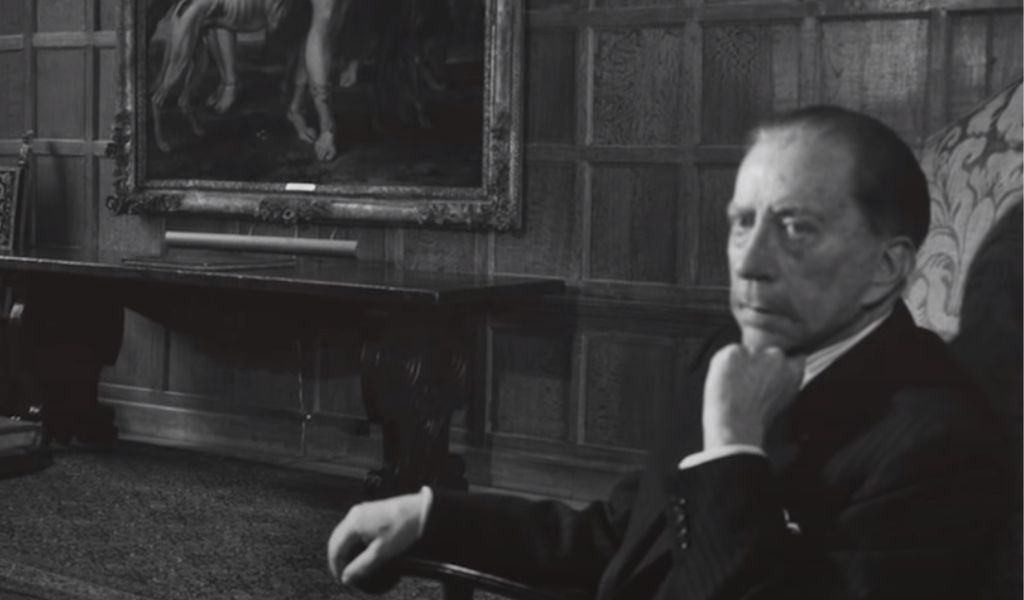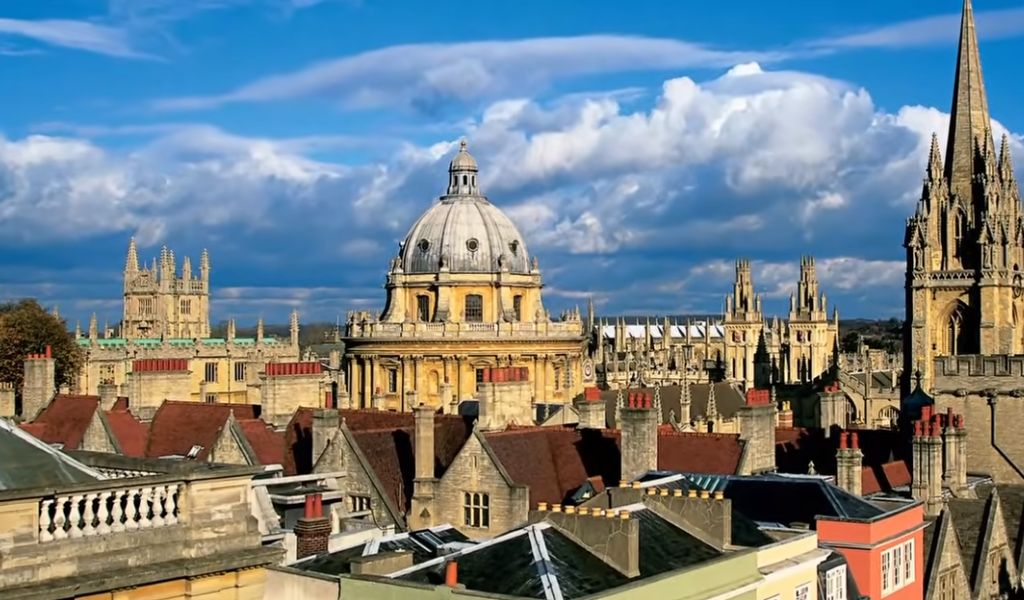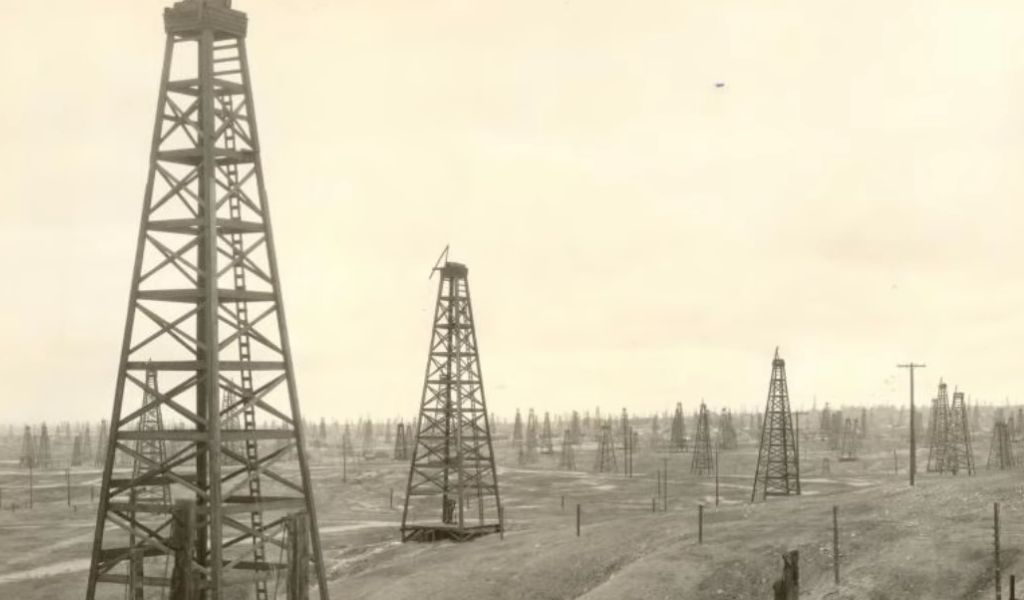With a huge sum made from oil money, it might have seemed like the Getty family had everything. But their past is also filled with crazy waysto save money, affairs, nasty divorces, kidnappings, and sad deaths.
Not So Humble Beginnings
Jean Paul Getty, who is better known as J. Paul, was born in Minneapolis on December 15, 1892. J. Paul Getty was the only child of wealthy lawyer George Getty (pictured) and his wife Sarah. His father made a lot of money as an insurance and business lawyer in a growing Midwestern city, so J. Paul had a good life growing up.

Birth of a Family Fortune
George Getty had the sense to get into the growing oil business in 1903. He went to Oklahoma and started the Minnehoma Oil Company. In just two years, the patriarch of the Getty family made enough money to move his family to a beautiful home in Los Angeles.

Academic Excellence
J. Paul did well in high school and went on to study at some of the best colleges in California. He also spent some time at the famous Oxford University in the UK. By the time he graduated from college in 1914, the future billionaire knew a lot about economics, petroleum geology, and several foreign languages.

Starting Out
George Getty, who was now a multi-millionaire, sent his son some money in September 1914 so that he could purchase oil leases in Oklahoma’s “red-bed” region at dirt-cheap prices. J. Paul was extremely motivated and set on building his own money, so he sold the leases at a huge markup.

First Million
J. Paul earned his first $1 million by June 1916, which is equivalent to an astonishing $22.6 million in today’s currency. To his father’s dismay, the 23-year-old oil tycoon relocated back to Los Angeles after becoming wealthy and spent several years living the life of a playboy lothario. When J. Paul returned to Oklahoma in 1919, he continued where he had left off, buying the most prolific oil wells and holding onto them while selling the less successful ones. The wealthy mogul with the Midas touch increased his wealth by $3 million in the 1920s by honing his money-making skills.

Marriages and Children
J. Paul, who liked much younger women, married 18-year-old Jeannette Dumont in 1923. A year later, she had his first son, George, who is shown in the picture. It didn’t work out, and in 1926, J. Paul married Allene Ashby. They split up in 1928, and that same year, the businessman married his third wife, Adolphine Helmle. In 1929, their son Jean was born. J. Paul didn’t spend much time with his family, which may be why they split up. One of the workaholic’s ex-wives said that business was his first love. She said that the oil mogul often worked 18-hour days and would even work on weekends and vacations.
Parental Disappointment
Despite being horrified and appalled by his son’s prior playboy lifestyle and long list of unsuccessful marriages—divorce was still strongly frowned upon in the 1920s—George Getty was proud of his son’s economic acumen and work ethic. George Getty was actually convinced that his womanizing son would someday bankrupt the family business. As a result, the $10 million estate of the Getty patriarch, who passed away in 1930, only left J. Paul with $500,000, with the majority of the money going to his mother Sarah.
Depression Savvy

Even if he had gotten a lot of money, he wouldn’t have needed it. Even when the Great Depression was at its worst, the young businessman knew how to make money. Even though experts told him not to, J. Paul bought oil stocks for almost nothing, which paid off big time. He bought the Pacific Western Oil Corporation and started the process of buying the Mission Corporation, which was the parent company of Skelly Oil and Tidewater Oil, two companies that would later merge to form Getty Oil.
Fourth Wife
In 1932, J. Paul and Adolphine got a divorce, and that same year, the oil baron married silent film star Ann Rork. They had two children, John Paul Jr. and Gordon Peter. John Paul Jr. was the father of John Paul Getty III, who was later taken hostage. But it wasn’t meant to be, and in 1936, they broke up.
Fifth Wife
In 1939, J. Paul married Louise Dudley ‘Teddy’ Lynch, a stage singer. Timothy, the couple’s son, died at age 12 from a brain tumor in 1956. Louise Getty said that J. Paul had yelled at her for spending too much money on the boy’s cancer care. The death of Timothy was the first of many bad things that happened to the Getty family.
Wartime Effort
J. Paul managed the production of aircraft parts through his Spartan Aircraft company, a division of Skelly Oil, during World War II, and even put himself forward for naval duty.
Europe Move
J. Paul went to Europe after World War II and stayed there for the most part. The tycoon was afraid of flying and moving in general, so he chose Europe because it is halfway between the oil fields in the US and those in the Middle East. During the late 1940s and early 1950s, J. Paul lived in hotel rooms, mostly at the George V in Paris and the Ritz in London.
Shrewd Investment
J. Paul purchased a 60-year lease on a deserted plot of land between Saudi Arabia and Kuwait in 1949, which was the smartest move of his career. J. Paul agreed to lease the land from King Saud for an affordable $9.5 million, or about $100 million in today’s currency, and agreed to pay an additional $1 million annually after that.
Black Gold
When huge oil supplies were found in 1953, the deal paid off. Soon, his Middle East businesses were pumping out 16 million barrels of the black stuff every year. In the same year, J. Paul finally took over the Mission Corporation and its companies, which included Skelly Oil and Tidewater Oil. At this point, the billionaire had also convinced his mother to let him run the family oil company.
Final Divorce
UK Base
J. Paul paid a pittance of $840,000 in 1959 to acquire Sutton Place, a 16th-century Tudor country home in southern England. In today’s terms, that is the equal of $7.5 million. Famously, the penny-pinching oilman installed a coin-operated phone in the mansion to stop his visitors from running up the tab. Currently, millionaire Alisher Usmanov is the owner of the home. J. Paul also possessed a gorgeous mansion in Kuwait, a villa in Malibu, California, a palace from the 15th century close to Rome, and a country property in England.
Scrooge-like Behavior
J. Paul liked to brag about how cheap he was. He often looked poor by wearing wrinkled suits and old sweaters, and he washed his own socks and underwear. When he gave his fifth wife acting lessons, he made her promise to pay him back if she got a paid part. He is also said to have made a group of friends wait in line to get into the Crufts dog show so they could get cheaper tickets. All of this happened even though by the late 1960s he was worth up to $3 billion and had full control of around 200 companies.
Troubled Tmes
But the lives of the whole family were hard. J. Paul had to deal with his son John Paul Jr.’s drinking and drug use, his son’s second wife Talitha’s death from an overdose in 1971, and the likely suicide of his oldest son George in 1973.
Grandson’s Abduction
John Paul Getty III, the oil baron’s grandson, was taken hostage by ‘Ndrangheta gunmen in Rome in June 1973. They wanted a ransom payment of $17 million, or $94 million in modern currency, in exchange for his safe return.
Refusal to Pay
When it came time to pay, J. Paul’s known miserliness set in, and he refused, claiming that “I have 14 other grandchildren and if I pay one penny now, then I’ll have 14 kidnapped grandchildren.” The ransom was equal to merely one day’s worth of oil production from J. Paul’s fields. In November 1973, the kidnappers lost patience and severed the boy’s ear, sending it, along with a lock of his hair, to an Italian newspaper. J. Paul Getty finally consented to pay a portion of the $2.9 million reduced ransom—about $16 million in today’s dollars—and loaned his son John Paul Getty Jr. the remaining funds to be repaid with interest.
Grandson’s Release
Despite being freed in December 1973, John Paul Getty III would spend the remainder of his life dealing with serious psychological damage. The heir, whose major disability was caused by an accidental drug overdose in 1981, passed away in 2011 at the age of 54 after years of poor health.
Art Collection
Even though J. Paul was the meanest billionaire ever, the industrialist was anything but frugal when it came to buying beautiful art. The majority of J. Paul’s impressive collection, which includes paintings by Rembrandt, Tintoretto, Monet, and other artists, is now kept at the Getty Museum in California, beginning in the 1930s.
Art Legacy
At the ripe old age of 83, J. Paul passed away at his Surrey estate. He left behind a $4 billion fortune, which is equivalent to $17.3 billion in today’s currency. The J. Paul Getty Trust, the richest museum in the world, received the majority of this funding.
Tragedy Continues to Haunt the Family
John Gilbert Getty, who was J. Paul Getty’s grandson, was found dead in a Texas hotel room on November 20, 2020. He was 52. It was said that he died from problems caused by taking too much fentanyl. This happened just two months after his mother Ann, who was 79, died of a heart attack. The musician John Gilbert Getty is pictured here with his daughter Ivy. He was the second son of businessman and composer Gordon Getty, whose oldest son Andrew died at the age of 47 from an intestinal ulcer. At the same time, he also had toxic amounts of methamphetamine in his body. Peter and Billy, plus their three half-sisters, are the only children of Gordon Getty who are still alive. Tragedies seem to keep happening to this famous family, which is sad.



![Top 10 Motivational Speakers in the World [Latest Update] Motivational Speakers](https://articleify.com/wp-content/uploads/2022/08/Motivational-Speakers-1-218x150.jpg)












![10 Countries With the Best Healthcare in the World [Statistical Analysis] Countries With the Best Healthcare in the World](https://articleify.com/wp-content/uploads/2025/07/Countries-With-the-Best-Healthcare-in-the-World-1-150x150.jpg)










